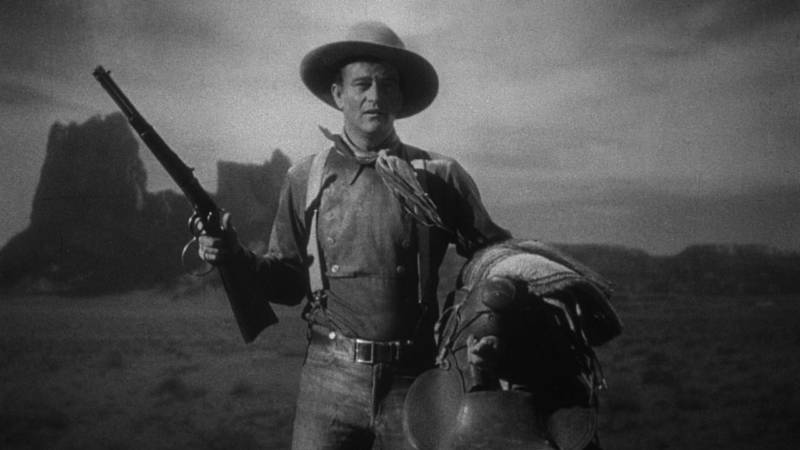I harbor no nostalgia for John Wayne the man. The actor, however, was unsurpassed at embodying the greatest of American ideals: That the manifestly imperfect United States aspired to be, and strove to be through the leadership of moral men, a more just, fair and protective society for everyone. If it feels more like an illusion than an ideal these days, don’t blame Hollywood.
Wayne was blessed, courtesy of the authoritarian director John Ford, with one of the great movie entrances of all time. We hear plenty about the Ringo Kid while we’re introduced to the passengers of Stagecoach (1939), and the payoff for all that anticipation is irresistible: Towering and virile at the side of the trail, spinning his rifle with confidence and style, Wayne galvanizes the audience’s attention as well as everyone in the coach.
Stagecoach (Sunday, June 16 at 11am at Alamo Drafthouse) wasn’t Wayne’s screen debut, however, or even his first starring role. Raoul Walsh had chosen him to lead The Big Trail (1930), and Ford punished Wayne for the best part of a decade before yanking him out of the doghouse.
Westerns were Hollywood’s bread and butter for decades, and Stagecoach still stands as one the most entertaining and satisfying films ever made in the genre. The passengers—a selfish Yankee banker, a Confederate veteran (and Southern gentleman), a soldier’s pregnant wife, a ruined and alcoholic doctor, a dance hall girl—provide a microcosm of both post-Civil War and post-Depression America, and you’d be surprised how many lines hit home in today’s climate.


